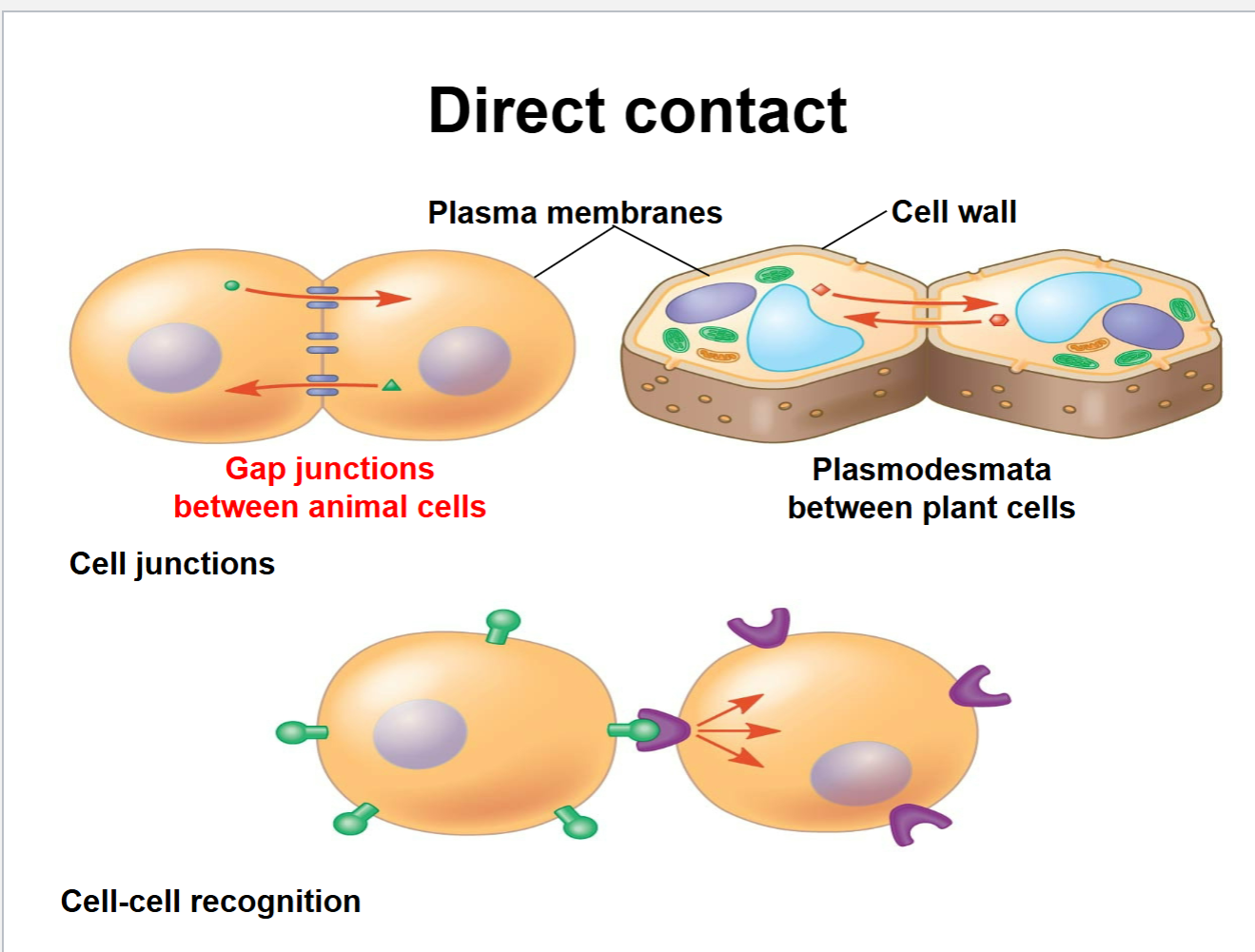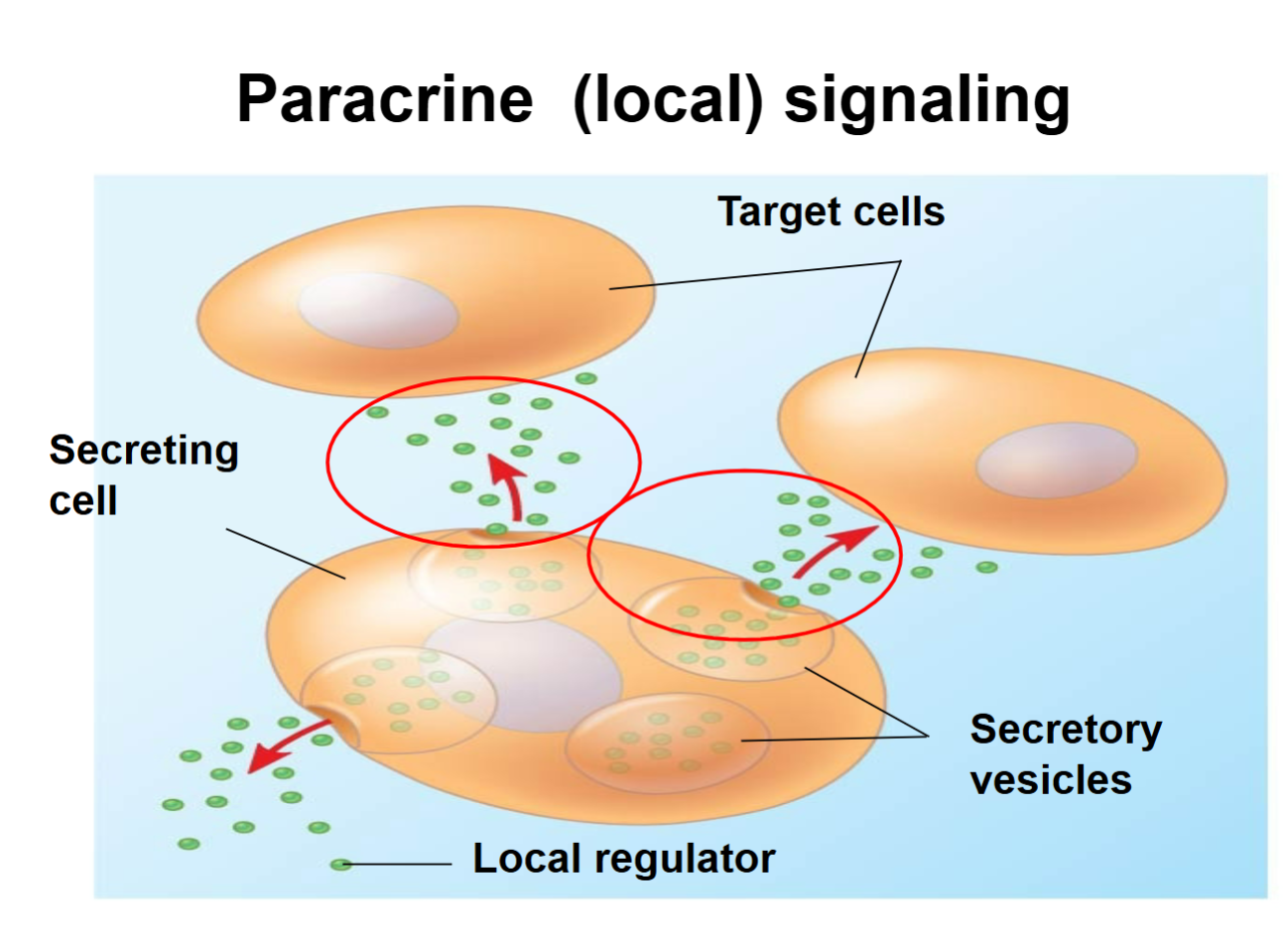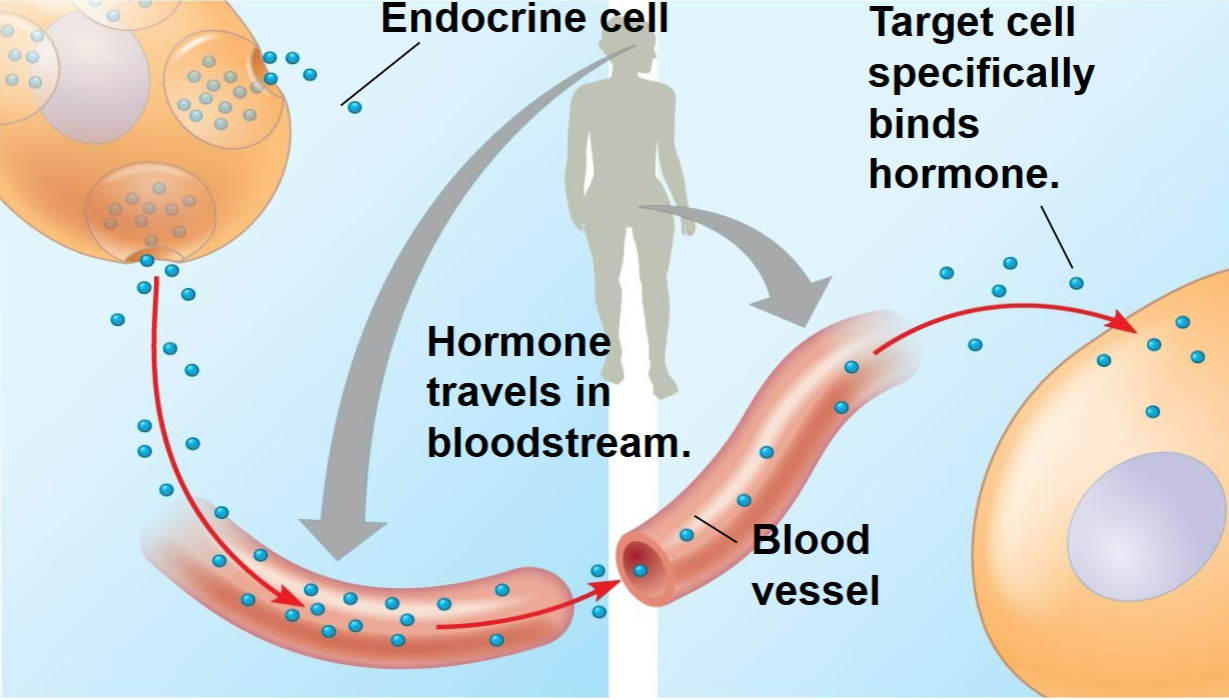Cell Communication- PART A
1/10
There's no tags or description
Looks like no tags are added yet.
Name | Mastery | Learn | Test | Matching | Spaced |
|---|
No study sessions yet.
11 Terms
What are the four main stages of cell communication.
Signal Transmission
Signal Reception
Signal Transduction
Cellular Response
What are the four main types of signal transmission (signalling between cells) - intercellular.
Direct contact, Paracrine signalling, Endocrine signalling, Sypnaptic signalling
What is Direct Contact signal transmission?
Adjacent cells forming direct connections between one another.
Example: gap junction in animal cells- pores between two cells where molecules can pass through

What is paracrine signalling?
signal passing from one cell to a neighbouring cell
Cells aren't connected but close enough to communicate through chemical messengers between cells.
Paracrine signalling involves a cell releasing chemical messengers (such as cytokines or growth factors) that act on nearby cells within the same tissue. These signals diffuse through the extracellular fluid but do not enter the bloodstream, ensuring a localized response.

What is endocrine signalling?
signal passing from one cell to a remote cell
Endocrine glands- a ductless organ which groups endocrine cells
Endocrine signalling- aka ''Long-distance signalling''

What is synaptic signalling?
paracrine signalling by a neurotransmitter
Occurs in animal nervous system when a neurotransmitter is released in response to an electric signal
E.g Serotonin, pharmaceuticals prevents uptake of serotonin by blocking receptor to retain in cell for longer to increase serotonergic response.
Understand what is meant by a signal receptor and how do intracellular signal receptors function, using steroid hormone receptors and guanylyl cyclase as examples.
A signal receptor is a protein that detects and responds to specific signaling molecules (ligands), triggering a change in cell activity.
Intracellular signal receptors are located inside the cell (in the cytoplasm or nucleus) and bind to small, nonpolar molecules that can cross the cell membrane.
Steroid hormone receptors: Steroid hormones (e.g. estrogen, cortisol) diffuse into the cell and bind to their receptors in the cytoplasm or nucleus. The receptor–hormone complex then acts as a transcription factor, binding to DNA to regulate gene expression.
Guanylyl cyclase (intracellular type): Activated by nitric oxide (NO), it converts GTP → cGMP, which serves as a second messenger to trigger downstream cellular responses (e.g. smooth muscle relaxation).
What are the three types of cell surface receptors and a summary of what it binds to?
G protein-linked receptor
Binding of a signal activated a G protein (called G-protein due to containing Guanine)
Enzyme-linked receptor
Binding of a signal stimulates enzyme activity on receptor
Ion channel-linked receptor
Binding of a signal causes a ion channel to open
How does G protein-linked receptor responds to a signal?
Binds energy rich GTP
All very similar in structure
GPCR systems are very widespread and diverse in functions
Hydrolyses bound GTP to GDP
G Protein goes inactive
Signalling pathway shut down
How does enzyme-linked receptor responds to a signal?
Example: Receptor tyrosine kinases (RTKs), attaches phosphates to tyrosines, triggers multiple signals transduction pathways at once
Kinase is a general name for an enzyme which adds a phosphate (ATP) to substrate- process called phosphorylation
Protein kinase suggests that it is a product of a protein
How does Ion-channel-linked receptor responds to a signal?
''Ligand-gated'' ion channel, closed gate when signalling molecule arrives. Cell opens for cellular response (difference in ion concentration inside of the cell and outside of the cell). Gate closes and spits out the ligand (signalling molecule)